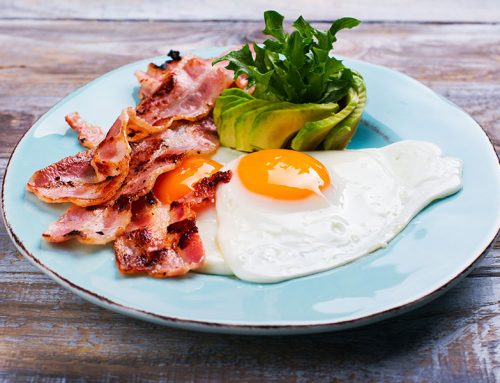Intensity is one of the most important training variables – that includes for cardio as well as lifting, and at times, it’s definitely beneficial to push yourself and train with high intensity (effort level) especially if you’re short on time and want efficiency. But can you get too much of a good thing? How much intensity is too much? Do you need “insanely” hard cardio that bring you to your knees to maximize your potential? Today’s Burn The Fat Blog reveals the answer.

QUESTION: Tom, do you think that the intensity of your workout is “The one big thing” that gives you results or is it more about being consistent? The reason I ask is because I’m following your Burn The Fat nutrition program and I also use a high-intensity workout program called the Insanity series. There’s some resistance exercises, but it’s not lifting – it’s more like high intensity cardio. I like these workouts, but I’m having a hard time pushing myself that hard every day and I’m finding now that I’m starting to dread doing them. I have been doing these workouts only 2-3 times per week instead of the 5 times per week that is recommended in the program. This workout brings me to my knees. I’ve started questioning myself and wondering if it’s even worth the torture. – Paul
ANSWER: Good question. The answer may depend on your goals, the condition you’re in now, your recovery ability, how much time you have, and even your personality type.
Some things to consider:
- Are you a beginner or already in shape and looking for the next challenge?
- Do you like home bodyweight workouts or are you a gym and weights/ cardio machine type?
- Are you the “hard-core” fitness nut type of person or do you simply want to get leaner and healthier, nothing crazy?
- When you say you want “results”, are you talking about fat loss, cardiovascular fitness improvement, muscle growth or all of the above?
With that in mind, let’s answer the HOW MUCH CARDIO INTENSITY IS BEST question in the context of fat loss first.
I’m sure you can appreciate that people can lose weight while lying in a hospital bed. If someone is sick and can’t keep food down, then there can be a significant calorie deficit even with zero exercise.
That may be an extreme example, but I use it because it rules out high intensity training as an absolute prerequisite for weight loss. In fact, this demonstrates how exercise is not a requirement to lose weight at all.
Obviously, starving yourself is NOT the approach I recommend! My Burn the Fat, Feed the Muscle program is based on the opposite: train more and feed the muscle while fueling the training properly.
I’m simply making the point that it’s not intensity per se or even any type of particular workout that creates the fat loss, it’s the calorie deficit.
- To burn fat, focus on establishing and maintaining a calorie deficit.
- To increase speed of fat loss, focus on increasing the size of the calorie deficit.
Calorie deficit = fat loss is a liberating concept because it makes you realize you have endless options for achieving your fat loss goal using all kinds of different combinations of nutrition and exercise.
Furthermore, none of the workouts have to beat you into submission to achieve a calorie deficit, especially if you work diligently on the nutrition side of the equation.
Countless thousands of people have achieved their goal weight with walking (low intensity exercise) as their only cardio. They chose walking because that’s what suited their needs and their personality.
Here’s where intensity comes in:
From a bodyfat loss perspective, using higher intensity training makes the workout more EFFICIENT. The higher the intensity, the more calories you burn per unit of time.
The more calories you burn, the more fat you lose, if all else remains equal (ie, if you don’t compensate by eating more).
Some trainers claim that low intensity steady-state exercise is “ineffective” or even “worthless.”
This is totally false.
Low intensity training is not ineffective, it’s simply less efficient. For example, it takes a lot of time walking to burn enough calories to put a major dent in your fat stores. You might have to walk for 60 minutes to get an equivalent calorie burn as 25 to 30 minutes of more intense cardio.
If you increased the intensity of your cardio, you’d burn more calories in less time and you’d drop the fat faster. You’d also be improving time efficiency by achieving a calorie deficit with less time investment.
But think about this: If that high intensity workout made you start to dread it, or if you started to think of it as torture, or if it got you injured, then how long would you stick with it?
If you can’t stick with it, what good did it do you? It gets tossed on the ever-growing pile of other quick fixes.
It’s surprising how often a moderate approach, or even the slow and steady approach, beats out the quick and intense approach if you extend your time perspective and think long term.
It’s the classic story of the tortoise vs the hare:

The hare comes blazing out of the gate in a sprint and leaves the tortoise in the dust. Looks like the hare will be the clear winner.
But the hare gasses out after that sprint and takes a nap.
The tortoise, being the more consistent of the two, slowly but surely keeps making progress, getting closer and closer to the goal, never missing a step.
As the fable goes, the tortoise eventually passes the complacent and or exhausted hare, who is lazily snoozing under a shady tree.
In the end, the Tortoise wins the race. Leisurely, I might add…(no “pukey” t-shirt necessary).
Intensity gets you there faster, if you can stick with it, but consistency ALWAYS pays in the long run when it comes to fat loss.
What about intensity in the context of fitness improvement?
One place where almost everyone gets confused is in distinguishing between the three different outcomes you can get from cardio workouts:
- Fat Loss
- Health improvement
- Fitness improvement
These are three completely different goals!
Fat loss is self-explanatory.
Health outcomes include blood pressure, blood lipids, and blood sugar. This is focusing on reducing disease risk – especially heart disease – and improving your overall well-being.
Fitness outcomes include things like VO2 max, conditioning, and sports performance. This is focused on improving your body’s ability to perform physical tasks.
It’s important to know that you can get health benefits from moderate and even light exercise. As I’ve written about in other posts, walking can provide the same health benefits as more intense cardio like running, it just takes longer.
But when you compare low intensity cardio to intense cardio for most types of fitness and heart health benefits, you can’t beat higher intensity training.
And the efficiency (time savings) is amazing. It’s astonishing how much cardiovascular fitness improvement you can get from a fairly small amount of intense, or sprint-like training:
This is one of the reasons High Intensity Interval Training (HIIT) is justifiably so popular.
A paper published in the ACSM’s Exercise and Sport Sciences Review discussed the research suggesting that intense interval training provides greater benefits for the heart than low or moderate intensity exercise.
The specific benefits discussed included:
- Increased maximal oxygen uptake
- Improved heart muscle contractile function
- Improved heart muscle calcium handling
- reduced cardiac dysfunction in metabolic syndrome
- Reversed pathological cardiac hypertrophy
- Increased physiological hypertrophy of the heart muscle
- Overall: improved quality of life and length of life by avoiding fatal heart attacks.
The researchers concluded:
“The studies indicate that high intensity may be an important success factor for designing effective exercise programs and that high intensity may be particularly critical for improving cardiac function.”
Ok, so that covers intensity in the contexts of fat burning and cardiovascular improvement…
What about for building muscle?
Once again, training intensity is a critical factor.
For muscles to grow, you have to literally break down muscle fibers, disrupt your body’s homeostasis and create a stress response. The adaptation to that disruption is strength and hypertrophy, but it only occurs if you can recover from the stress.
The major point is that intensity is a critical factor for all kinds of health and fitness training, but it’s also the one variable that has to be managed the most carefully… and sensibly!
Doing knock-you-to-your-knees workouts of any kind, every single day is not a smart strategy.
I know a few guys – like my friend Mike the kickboxing instructor – the dude is indestructible! He could take any workout you give him, chew it up, spit it out and then say, “Is that it?” (Then he would go teach 3 classes in a row!)
But unless you’re one of these super-human genetic mutants, your body just can’t take a nonstop pounding. Yet there are lots of people with the disposition and personality type to go in the gym and beat themselves to a pulp each time.
Despite the heroic effort, they may be doing their bodies more harm than good.
This is why most experts today are recommending only 1 to3 HIIT-style or high intensity cardio workouts per week when you’re concurrently doing intense weight training.
If you want to increase your calorie deficit so you can burn more fat in less time, go ahead and do more training. But for most people, the additional workouts should below or medium in intensity so they don’t interfere with physical recovery or lead to mental burnout.
Intense daily boot-campish workouts may appeal to the”I want to be tough as a navy seal” personality types and advanced workouts serve their purpose – to provide-an appropriate challenge for advanced fitness enthusiasts.
If you enjoy it, and if you can recover from it, and if you can stay injury-free, and if you can stick with it consistently, then go for it. But be sure to balance your intensity with recovery:
- Balance your weight training and cardio (volume, frequency and intensity) so you can recover from both and reap the benefits of both forms of training.
- Vary your workouts with some form of periodization intensity-cycling system.
Last point: I believe that weight training should sit atop the exercise hierarchy as one part of a total fitness program.
Fat loss programs that are based entirely on calisthenic, aerobic or body weight exercise are popular today, but…
I recommend a complete 5-element model for total fitness and leanness:
1. Nutrition
2. Weight training
3. Cardio training (either low/moderate and/or intense)
4. Mental training
5. Social support
Note that cardio training and weight training are separate components. I’m not a big advocate of trying to turn your resistance training into cardio. If gaining muscle and strength are high on your goal lists, then it’s ideal to do dedicated weight training that’s separate from your cardio training.
In summary, to achieve total fitness and physique development – muscle, strength, conditioning and leanness, combine weights with cardio…
Judiciously balance hare-like intensity with recovery…
And do it all with tortoise-like consistency…
Then, watch what happens to your body. You will like it!
Train hard and expect success,
Tom Venuto,
Founder of Burn the Fat Inner Circle
Author of: Flexible Meal Planning For Fat Loss






Great point Tom about intensity in muscle building. The classic no pain no gain mentality is very dangerous and too often I see guys either hurt themselves or burn out.
Hey Tom!GREAT article! I loved the info you provided. I think its really based on how bad you want it and what your goals are as to how intense one should train. I have a couple questions. If I am in a calorie deficit for fat loss (say 20%) and I am weight training very intensly, will my body be able to build some of the muscle i just tore down back up? I realize not all of it but I am just wondering at what point is it more detrimental than doing any good to train hard with weights in a cal deficit. Im a personal trainer and exercise instructor and have been working out for years. my issue has always been that I can’t seem to hold onto enough muscle, yet i still retain fat in my mid-section and thighs (im female). According to my polar heart rate monitor, i am burning approximately 2700 cals/wk during my workouts (sometimes 2x/day if i teach), yet my body fat lingers and sometimes i lose a pound of muscle, which leads to frustration. I go back and forth between “im not eating enough” to “i must not be accurate with my calorie intake”. I appreciate your thoughts and feedback. take care
I too have heard that rumor that a low-intensity, steady-state workout is “not worth the time”, and so I’m glad to hear that it’s not entirely true.Currently, I’m totally out of shape, and make a stab at a high intensity workout every so often, get discouraged, and then don’t exercise again for many days. A “slow and steady” approach, with a high intensity thrown in once or twice a week or so, sounds like it could work.I’ve just started reading your “The Body Fat Solution”; you are so right about the emotional / mental side of losing weight. If it were just so simple as cutting calories, increasing exercise etc, there wouldn’t be the obesity problem there is today.
Tom,That was a great point that was raised by Paul. I’ve been pondering that issue myself. I like to run, and inherently push myself during each session. I’m a competitve person and strive to beat my best time, virtually every time I lace up my sneakers.However, I started to experience an overuse injury with my left foot. This made me cut back on my cardio, and formulate a new, more provident approach to training. Instead of always going at it hammer and tongs, I’ve been reducing the intensity and mileage slighty, and increasing the frequency, and this has enabled me to train continuously, without fail. So far this approach has served me in good stead.It may take slighty longer to burn all the fat, but in the meantime, I’m enjoying my workouts more, and most importantly, NOT getting injuried LOL. That as they say, is PRICELESS. Slow and steady (relatively speaking) seems to be the most prudent approach for me.
This is a great topic.I am a CPT in Tampa, FL and I see newcomers come into the gym all the time who kill themselves for a few weeks and then we never see them again.It is very sad to see because the frustration that comes with the feeling that exercise did not work is very real. Unfortunately people get bad advice everyday and it hurts them in the end!So trainers like me who work with people everyday are greatful to have supporting resources like your books! I am slowly working my way through “Burn The Fat, Feed The Muscle” and have suggested it to many of my clients and have it available on both of my sites.If it would help anyone you can view a free video on weight lossinstantly. .
Tom your absolutely right about intensity and fat loss. My favorite cardio machine is the Concept 2 indoor rower. I do 30-45min daily @ a HR of 145-150 bpm, 750 cal, about 10,000 meters. I could never get the same results on a stationary bike or a TM. But intensity is the key if you want to increased efficiency and metabolism..
I just want to say: “Thank you” for a very detailed and helpful answer to the query about “Insanity Intensity”. I found all sections of your answer very scientific, knowledgeable and making very good sense. It increased my knowledge about how to go about strength training in a sensible way. I’m 75 and enjoying my strength training and personal training. Thank you, Sara
Hi TomHope you are well. As usual thanks for the information. I especially appreaciate how you take lots of variables into consideration. This is about 4 years that I have been working out consistently (although some weeks are better than others) and as I get to know myself I realise the merit in a lot of what you shared. For example I realise that the type of workout that I will stick to is influenced by my personality type and also I like how you make the whole thing real and make it clear that no (sensible) approach is bad…Like it’s ok to simply walk for cardio depending on your goals whereas for somebody else with different goals they may need something with higher intensity or as another option the walker can mix it up with higher intensity a couple of days a week. Everyone can personalise their fitness regimen. Like for me some days I just feel beat but because I want to be consistent I will do a lower-intensity workout but on the days that I feel pumped I do some HIIT.So thanks again and take careJanelle
Excellent article Tom.
I’ve found that as I age, I can’t recover as well from the high intensity workouts. If I do a lot of them, I get nagging injuries – bursitis, that kind of thing.Cheers!Claudia
I enjoyed your burn the fat book (bought it a long time ago) and now I follow your articles/blog. …Very good articles. Thanks.You always give great (and objective) info-tips- & reminders… once again this time. Love that. You’re part of what keeps me motivated and wanting to work hard-er (and smart-er), to attain and maintain my best shape (body, mind, spirit) over the years and to always have fun with it. …I’m now 36 going on 25 (also says my doctor)!;-) Thanks again and many smiles.
Tom,As usual, you’ve packed so much wisdom and useful information into your response that anyone even thinking of improving their health and fitness would do well just to start by reading it. I’m continually impressed by how well you sift through all of the information out there and distill it down to the real, useful, and scientific and put it into terms everyone can understand.
These are real concerns. I’m 57 and stepped my workouts way up after years of cruising. Really kicked the proverbial Hare. But, I found myself dodging the gym much more often. My lizard brain was telling me it was wiped out or sore, and I found myself exercising much less often.. Need to find a better balance and the balance changes with age—older muscles do take longer to recover..
hey Tom,thanks for such a great article, it is really deep. i think workout intensity is one of the most misunderstood concept. many people think they can get great results by simply torture themselves which is a kind of stupid.
I am a 42 year old female, been working out consistently my whole life, but every 10 years or so, I have gained 30 pounds with a metabolism change, and had to change up diet/exercise each time to get back to normal.I was doing hard core kickboxing and weights, and only staying OK, so I got the Insanity workout, and I love it.I’m on day 15 and love the changes.Yes it’s definitely hard.The program is actually six days a week, not five.One day a week is tame, like you do the warm up, then the workout is like a pilates yoga sort of thing.The workouts are 15 minutes of warm up, then 5 of stretch, then about 15-20 minutes of hard core intensity cardio and plyometrics, etc.What I like is that you do the same five or six moves in sets with 30 second water breaks, so your heart rate is up and down.To keep it fun, I keep the sound off, and put on my own dance music loud, and let it rip.I like it better than PX90 because you don’t have to hear him, you can just watch the video, and obviously, the moves are repetitive, so you just go along, no weights or supplies needed.He tests you every two weeks on Monday’s workout, which is super hard, but you measure your progress.For the person who wrote the letter, if 3 days is all you can do, then do it, but be sure to push yourself, as Sean says, dig deeper.I agree with another commenter, that if you want something bad enough you do it.I’m entering the fitness competition arena at 42 years old cuz I want it that badly, so I visualize my being on stage and winning when it gets hard.And on the days you just can’t, give yourself the break guilt free.
Hello:What is important about intensity is that it is relative to someone’s abillities. If you are dedicated and passionate and keep training for more than 1-2 years, you will be able to ahieve intensities of training you never thought possible for you.If you want just to look “normal” and to be healthy and fit for the daily life, continuity and consistency is the key.If you want to turn heads on the beach and score points on sport arenas, intensity may be the key factor.Fitness is very fair: You get what you worked for.Keep training,
I’ve seen this Insanity program as well. Its pretty interesting how these 2 (p90x) are 5-6x per week workout plans. I was initially surprised because I thought they were less.Thats 6 hours per week of exercise which isn’t bad, its just surprising to see that many workouts. if it works and you like it, then thats half the battle.
Thank you very much! In what you say that the training of supersets increase the efficiency of training, and that they are ideal for busy people, it seems to me to be geil! Can I do those kinds of exercises for only 15 minutes?
I think it all depends on balance.